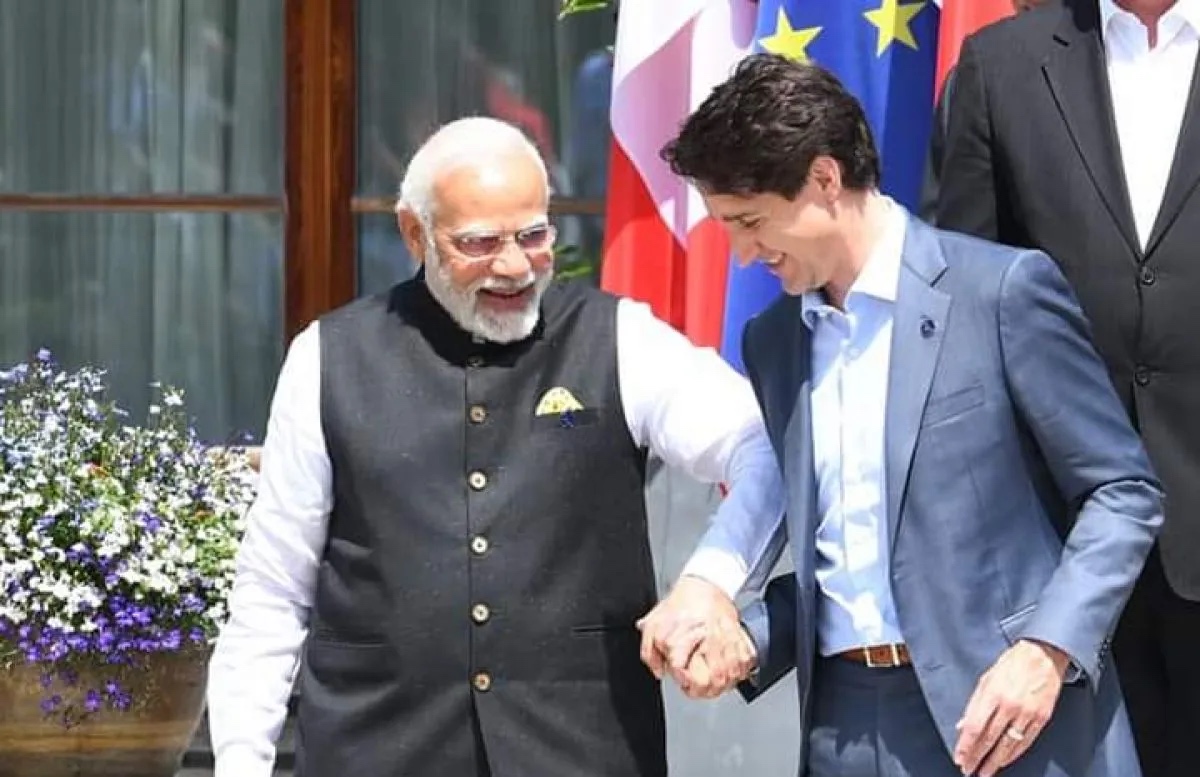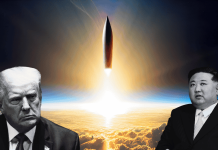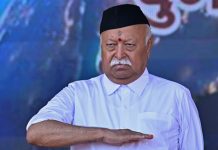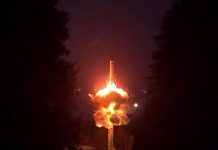The rift between India and Canada is intensifying, days after the two states expelled each other’s diplomats. Raising the stakes further, the Canadian Minister of Foreign Affairs Mélanie Joly told reporters that the remaining Indian diplomats in the country are “clearly on notice.”
Speaking to reporters on October 18, Canadian Minister Joly said the government would not tolerate any diplomats who violate the Vienna Convention or endanger the lives of Canadian citizens. Canada’s national police department has alleged that Indian ambassadors had links to murders, threats of death, and intimidation in Canada.
Joly said, “We’ve never seen that in our history. That level of transnational repression cannot happen on Canadian soil. We’ve seen it elsewhere in Europe. Russia has done that in Germany and the UK, and we needed to stand firm on this issue.”
The Indo-Canadian relationship has been fraught with tensions since September 2023, when Canadian Prime Minister Justin Trudeau first alleged that Indian agents were responsible for the assassination of a Sikh separatist leader, Hardeep Singh Nijjar, in Canada.
The bilateral ties hit the nadir after Canada named India’s envoy to Ottawa, Sanjay Verma, and other diplomats as ‘persona non grata’ after the killing of Nijjar, who was a Canadian citizen. The allegations sparked a diplomatic row between the two countries, with both sides expelling six diplomats.
On June 18, 2023, Nijjar—who India labeled as a terrorist in 2020—was shot and killed by masked assailants outside a Sikh temple in British Columbia, Canada.
Indian diplomats have been accused of targeting Sikh separatists by Trudeau and the Royal Canadian Mounted Police (RCMP). India has dismissed the allegations as “preposterous” and “politically motivated” and accused the Trudeau government of damaging ties.
The matters took a dangerous turn earlier this week when Justin Trudeau conceded during his testimony before the Public Inquiry into Foreign Interference in Federal Electoral Processes and Democratic Institutions in Ottawa that the accusations were based on ‘intelligence’ rather than tangible and verifiable evidence.
The admission confirmed India’s long-held position that Canada had not provided any evidence for the serious allegations leveled against it.
An official statement from the Indian Ministry of External Affairs (MEA) stated: “Since Prime Minister Trudeau made certain allegations in September 2023, the Canadian Government has not shared a shred of evidence with the Government of India, despite many requests from our side.”
On its part, India has its share of discontent with Canada. The MEA has accused the Canadian government of harboring criminals and anti-India organizations despite various requests for extradition and provisional arrest over the past decade.
The Indian government states that these allegations were made for political gains and favor with a particular political party and vote bank—a reference to the Sikh extremists who seek to build a separate Sikh state, Khalistan.

“His Cabinet has included individuals who have openly associated with an extremist and separatist agenda regarding India. His naked interference in Indian internal politics in December 2020 showed how far he was willing to go in this regard. That his Government was dependent on a political party, whose leader openly espouses a separatist ideology vis-à-vis India only aggravated matters. Under criticism for turning a blind eye to foreign interference in Canadian politics, his Government has deliberately brought in India in an attempt to mitigate the damage,” read the statement.
With the bilateral relationship now at rock bottom, India has accused Canada’s Prime Minister Justin Trudeau of “cavalier behavior.”
Notably, while Justin Trudeau has come under fire for taking the ties to a new low, it was under the leadership of his father, Pierre Elliott Trudeau, that the seeds of discord were first sown between India and Canada.
Back in the day, the animosity between the two countries, fueled by Canada’s shielding of Khalistani separatists and former Prime Minister Trudeau’s apathy, led to the worst attacks on Canadian citizens.
Terror Attack Under Sr Trudeau
Pierre Elliott Trudeau was the 15th and most popular Prime Minister of Canada. However, like his son, he had troubled ties with India.
The first blow to diplomatic ties came when India conducted a nuclear test on 18 May 1974 under the codename ‘Smiling Buddha.’ Even though India insisted that the test was conducted for peaceful purposes, there was criticism from several quarters, including Canada.
In 1960, India commissioned the CIRUS nuclear reactor, which was built with Canadian assistance. At the time, Pierre Trudeau announced that the initiative was for peaceful purposes and that Canada would stop working with India on nuclear projects if India tested nuclear weapons.
So, when India conducted a nuclear test, Foreign policy experts in Ottawa were incensed based on suspicion that New Delhi had used the CIRUS reactor for the development of nuclear weapons. The reactor apparently gave India access to plutonium by lowering the entry barrier. India used the plutonium to construct nuclear weapons.
The test came as a major shocker since the Indian government had earlier assured Canada that the reactor would not be used in the construction or explosion of nuclear weapons.

Feeling a deep sense of betrayal, Pierre Trudeau reportedly pulled out funding for India’s nuclear energy program and withdrew Canadian personnel employed at another reactor in India. This caused a massive setback to Indian nuclear energy development.
Several years down the line, India conducted another nuclear test in 1998. This further enraged Canada, which had come under the scanner for providing the South Asian country with the means to develop a nuclear weapon. The Canadian government expressed “deep disappointment” and imposed sanctions on New Delhi.
Another issue, which has more relevance today, is the issue of the Khalistani movement simmering in Canada. With the 1980s militant crackdown in India, several Sikh extremists sought sanctuary in Canada.
At the time, the former Indian Prime Minister Indira Gandhi expressed concerns to Canadian Prime Minister Pierre Trudeau and asked him to take measures to extradite these separatists to India. However, all calls were discarded.
One Sikh extremist who changed the course of the Indo-Canadian relationship was Talwinder Singh Parmar. In 1981, he was accused of killing two police officers in Punjab, following which he fled to Canada.
A supporter of the Khalistani group Babbar Khalsa, Parmar advocated for communal massacres and attacks on Indian embassies overseas. India asked for Parmar to be extradited, but Pierre Trudeau’s administration denied the request. Furthermore, no attention was paid to intelligence warnings given by New Delhi.
According to media reports, India’s intelligence agencies issued an urgent communication to the Canadian authorities on June 1, 1985, requesting the country to take security measures against a potential airplane attack by terrorists from the Khalistani movement.
Like previous communications, Pierre Trudeau’s administration neglected this message from India. A few days later, on June 23, 1985, a disaster struck.
An Air India Flight 182 (Kanishka) traveling from Toronto to London, UK, was bombed mid-air. The bombs were planted in two suitcases that set off over the Atlantic Ocean, causing the plane to disintegrate.
The wreckage of the aircraft plummeted into the ocean, some 190 kilometers (120 miles) off the coast of Ireland. All 329 people on board were killed in the bombing. Of these, 268 were Canadian citizens, 27 were British, and 22 were Indian citizens.
The bombing of Air India Flight 182 is considered the deadliest aviation incident in Air India’s history, the worst terrorist strike in Canadian history, and, up until the September 11 attacks in 2001, the deadliest act of aviation terrorism worldwide.
As India had warned, Parmar turned out to be behind the ghastly bombing along with another, Inderjit Singh Reyat. The ensuing inquiry and legal action took nearly two decades.
At about C$130 million, this trial was the most costly in Canadian history and yet led to the conviction of only one person-Inderjit Reyat. The Canadian authorities came under fire for not doing enough to prevent the attack and for bungling the investigation.

A Canadian internal commission’s investigation later concluded that the terrorist attack was made possible by a “cascading series of errors” committed by the Canadian government, the RCMP, and the Canadian Security Intelligence Service (CSIS).
The attack sent shockwaves across the world. India was specifically left bereft after the tragedy. While most people who died on that flight were Canadian citizens, a majority of them were of Indian origin. Several years after the attack, the prevailing opinion in India is that justice was never served to the victims.
Over the years, several Indian political analysts have brought up the 1985 incident to underscore Canada’s apathy and ignorance of genuine concerns that endanger the security of both countries.
The latest spat between the two nations has also renewed interest in the tragedy in India, with several Indian publications comparing the policies of the father-son duo.
The line towed by Justin Trudeau on the Khalistani issue mirrors the policies of his father, Sr Trudeau, who let the country suffer its worst terrorist attack instead of cooperating with India on legitimate security issues.
- Contact the author at sakshi.tiwari9555(at)gmail.com
- Follow EurAsian Times on Google News




